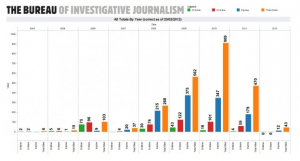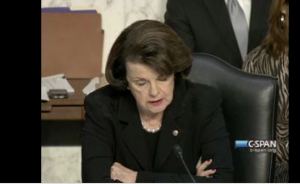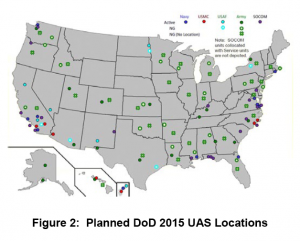Drones Killing Fewer Civilians, But Still Killing Diplomacy
In an article describing how our use of drones in Pakistan continues to mobilize public opinion against US involvement, the NYT includes this description of how militants claim to be limiting the efficacy of some drone strikes.
During an interview last month in Shawal, a thickly-forested district of plunging valleys that became a haven for Al Qaeda after 2001, a senior Taliban commander, Wali ur-Rehman, ordered his fighters to scan a newly arrived car with a camcorder. Mr. Rehman explained that the camera could somehow detect otherwise invisible signals from the “patrai” — local slang for small electronic tracking devices that, many tribesmen believe, guide American missiles to their target.
“This is our new weapon,” said Mr. Rehman, who has a $5 million United States government bounty on his head, pointing to the Sony camera. “It has saved a lot of lives.”
Whether that was true is unclear, although a former C.I.A. official confirmed that the agency does use tracking devices to identify targets. Either way, Mr. Rehman’s camcorder served a gruesome secondary purpose: recording the last testimony of tribesmen accused of spying for the United States, dozens of whom have been tortured and executed.
That is, the Taliban have developed some way to scan for locally applied sensors the drones use to assist targeting. And–the NYT suggests but doesn’t say explicitly–those found assisting in targeting with those sensors have, in the past, been treated as spies for the CIA (though the story notes that the Taliban has backed off executing such people after concern about some innocent deaths).
That’s one change in drone warfare, it seems. Though I’m struck by NYT’s thin coverage of another: David Petraeus’ new targeting rules. It notes the increasing precision of the drone strikes.
Accounts of civilian casualties play a major role in Pakistani anger toward the drones. An extraordinary claim by President Obama’s top counterterrorism adviser, John O. Brennan, last June that there had not been “a single collateral death” over the previous year drew an indignant response. The Bureau of Investigative Journalism, which monitors the toll, counted “credible media accounts” of between 63 and 127 nonmilitant deaths in 2011, and a recent Associated Press investigation found evidence that at least 56 villagers and tribal police had been killed in the 10 largest strikes since August 2010. But analysts, American officials and even many tribesmen agree the drones are increasingly precise. Of 10 strikes this year, the local news media have alleged civilian deaths in one case. The remainder of those killed — 58 people, by conservative estimates — were militants.
And notes the Administration debate that resulted in changed drone rules.
The pace has relented, with 64 strikes recorded in 2011, down from 117 in 2010, according to the Long War Journal, a Web site that closely monitors the strikes. A lively debate inside the Obama administration last summer gave the State Department greater say in the strikes. The final say, however, still rests with David H. Petraeus, the C.I.A. director.
But it doesn’t talk about one of the key reasons why the revised targeting has resulted in fewer civilian casualties: the move away from “signature strikes” which target patterns of behavior rather than named targets. Here’s how the WSJ described the change in a seminal article from last year.
Signature strikes target groups of men believed to be militants associated with terrorist groups, but whose identities aren’t always known. The bulk of CIA’s drone strikes are signature strikes.



